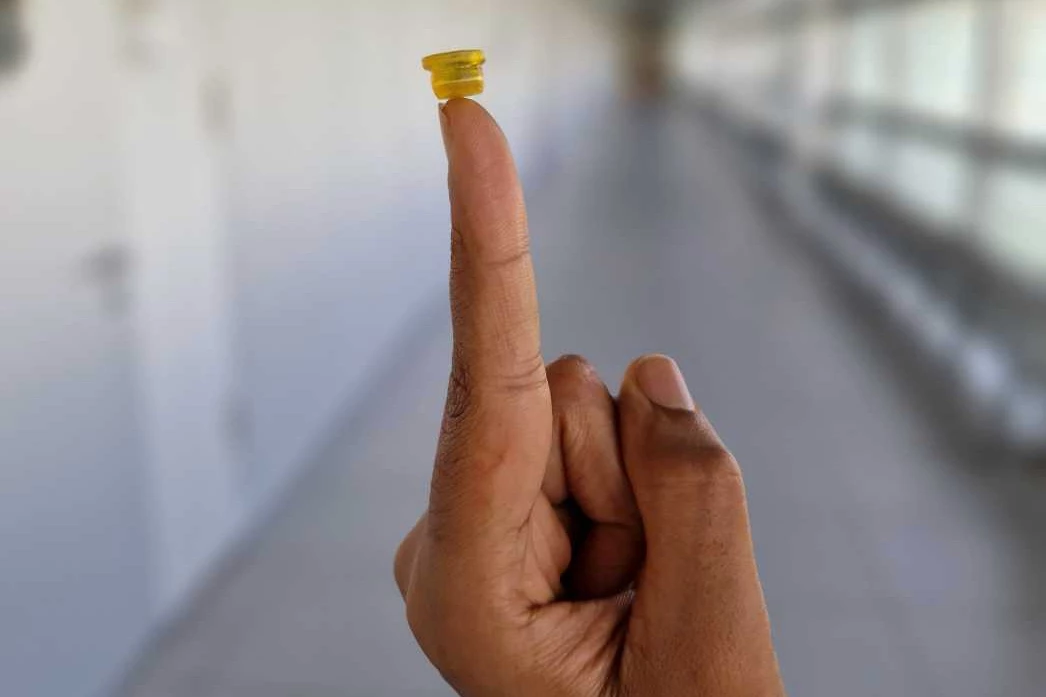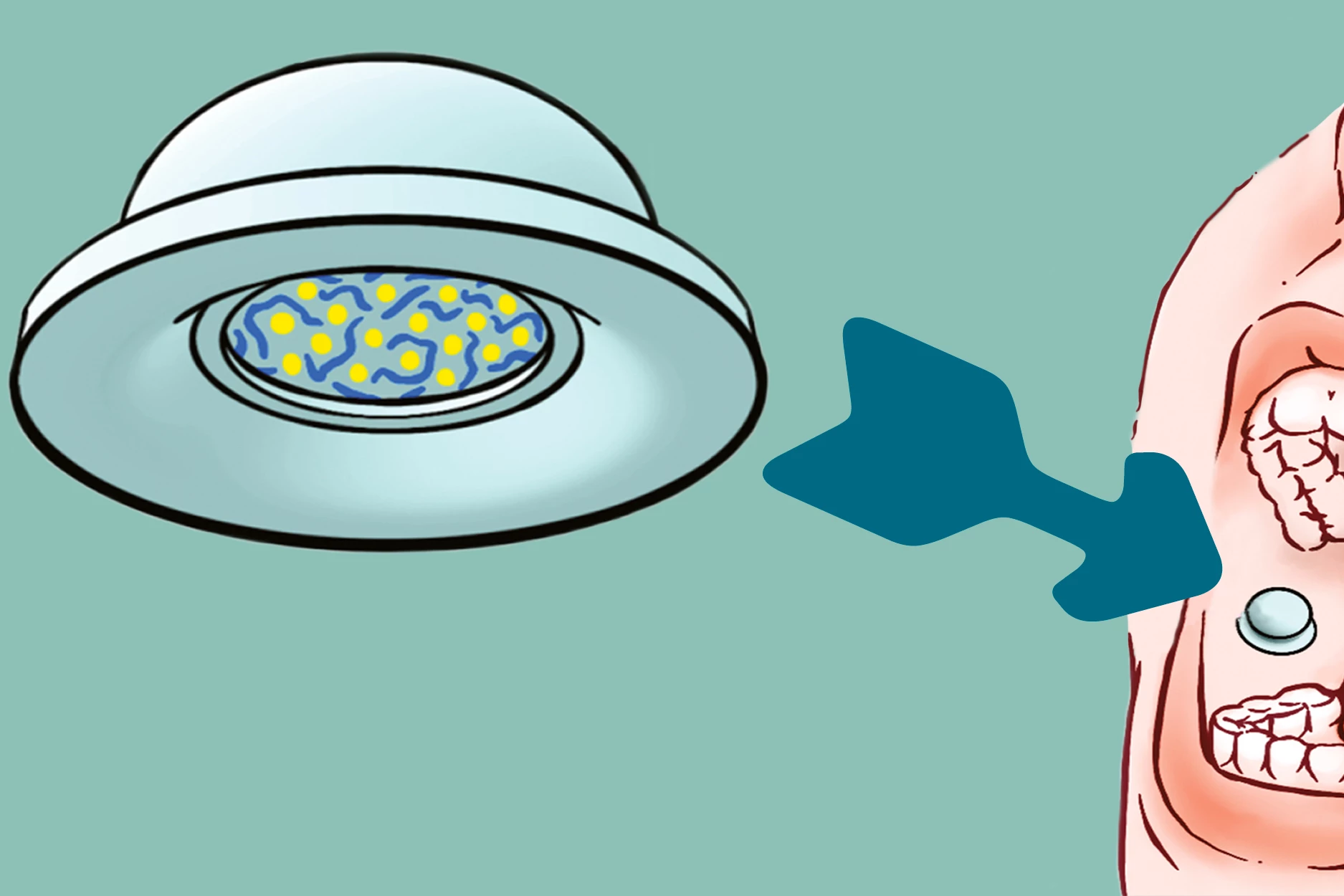Nobody likes getting needles, but unfortunately there are some medications that can only be administered via injection. That could be about to change, however, thanks to the invention of a suction cup that you stick in your mouth.
The problem with injection-only pharmaceuticals lies in the fact that they're made up of relatively large molecules. Those molecules get broken apart by the digestive system if the medication is taken orally, plus they're too large to enter the bloodstream by passing through the walls of the intestine.
They're likewise too big to pass through the mucous membrane that makes up the inner lining of the cheeks (known as the buccal mucosa) and the underside of the tongue. That's where the octopus-sucker-inspired suction cup comes in.
Created by scientists at Switzerland's ETH Zurich research institute, the 10-mm wide by 6-mm thick device gets loaded up with the drug in question, and is then stuck onto the cheek lining simply by pressing it into place with two fingers. The vacuum which forms inside the cup then stretches the mucous membrane beneath it, making it much more permeable.

In order to boost that permeability even further, a naturally derived chemical which is added to the medication temporarily loosens up the membrane's cell network. As a result, the drug payload is delivered through the buccal mucosa and into the bloodstream within just a few minutes.
In tests performed on dogs (which were not harmed), the suction cups successfully delivered medications into the bloodstream. Empty cups were also trialled on 40 human subjects, most of whom stated that they would prefer the delivery method over receiving injections. The cups remained attached to the volunteers' cheek linings for up to half an hour, without causing any discomfort.

"We have a prototype and have already patented the technology," said ETH's Nevena Paunović, who led the study along with David Klein Cerrejon. "Our next step is to manufacture the suction cup in a way that meets current pharmaceutical regulations."
The cup is currently being commercialized via spinoff company Transire Bio. A paper on the research was recently published in the journal Science Translational Medicine.
Source: ETH Zurich





